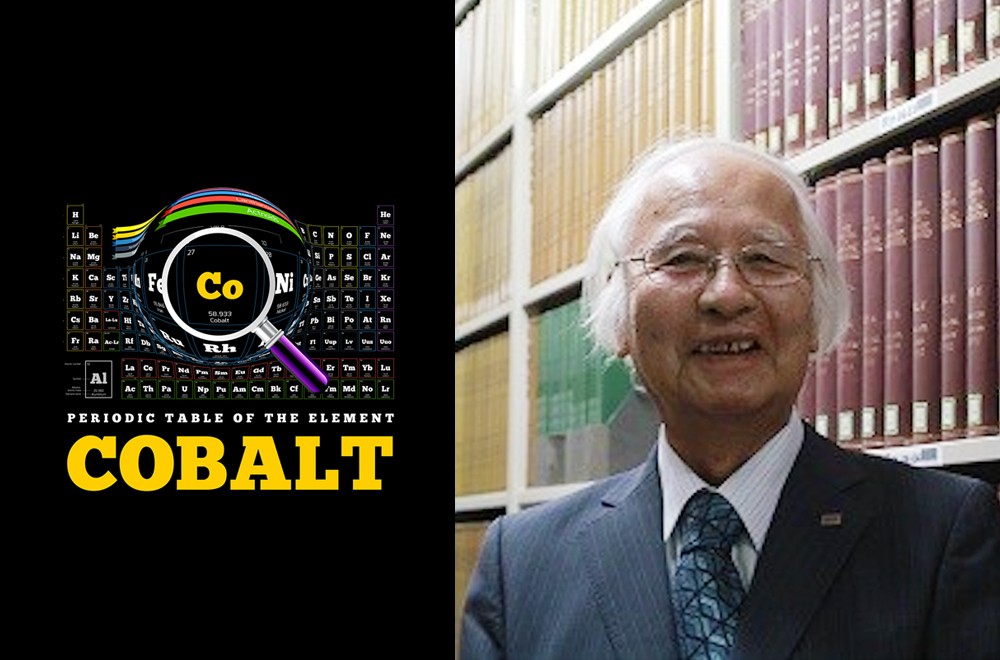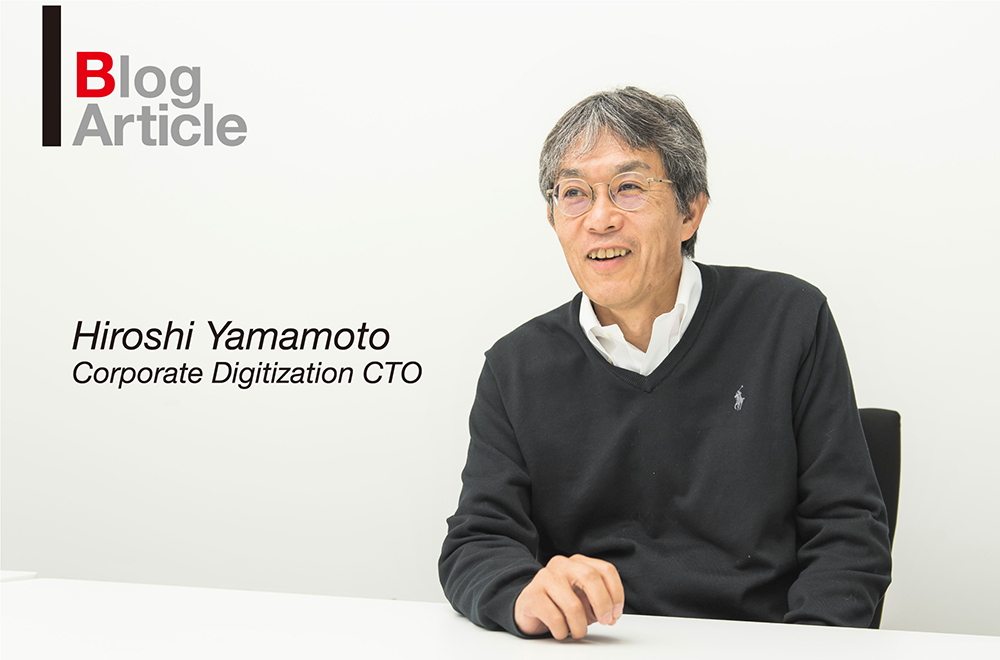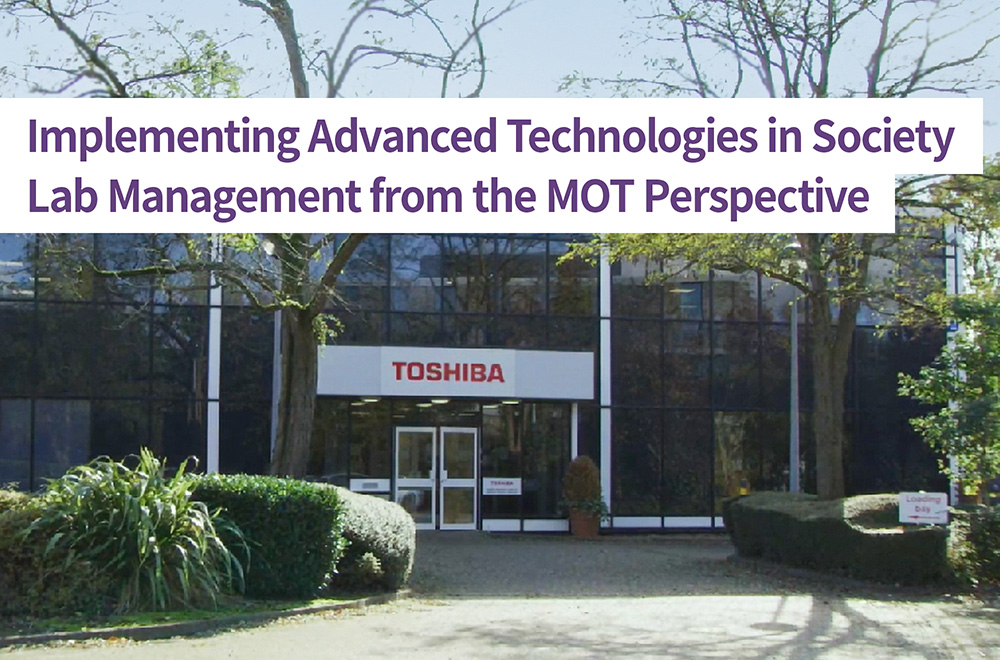Toshiba’s CTO Shares His Vision: The Cyber and the Physical–Part 2
2019/01/16 Toshiba Clip Team
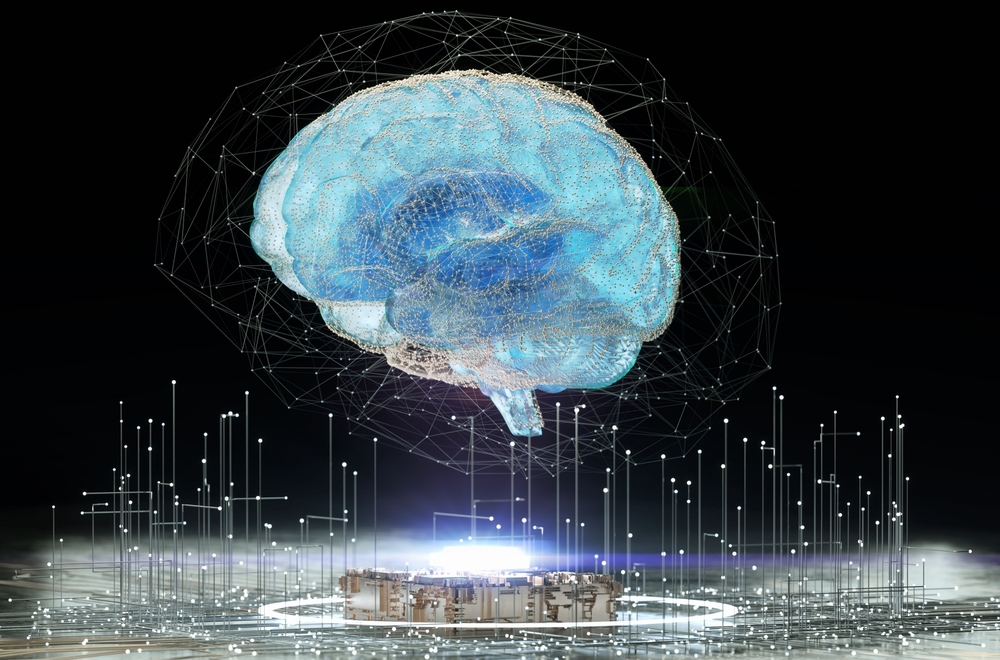
In today’s world, everything is connected through the internet. We have reached a point where using AI technology in cyber space can create value, and where major business opportunities can be found not only in analyzing data on consumption and other human behavior, but also from objects found in the real world, such as the operational status of all kinds of devices, and the level of electric power demand.
Toshiba aims to evolve to become a cyber-physical system technology company that contributes solutions to the issues society faces with technologies that merge the cyber and the physical, the real world. In this second part of our interview with Dr. Shiro Saito on Toshiba’s technology strategy, we close in on the technology future that Toshiba aims to achieve through change, and his expectations of researchers and engineers. (Read Part 1)
– In respect of technology development, what are the points where Toshiba must change its mindset?
Saito: There was a time when we thought we could do everything by ourselves, but with the realization of the information society that idea has become inconceivable. Where necessary, to get early results, we need to promote research and development in collaboration with other people. It is crucial not to fall into the trap of a go it alone mentality. With that understanding in mind, we now promote “open innovation” from the early stages of research on, and look to collaborate with top universities and research institutes in Japan and overseas. We engage in research and development with academia and industry at the global level, including spoken language processing technology with the Chinese Academy of Sciences and data analysis technology with the Indian Institute of Science.
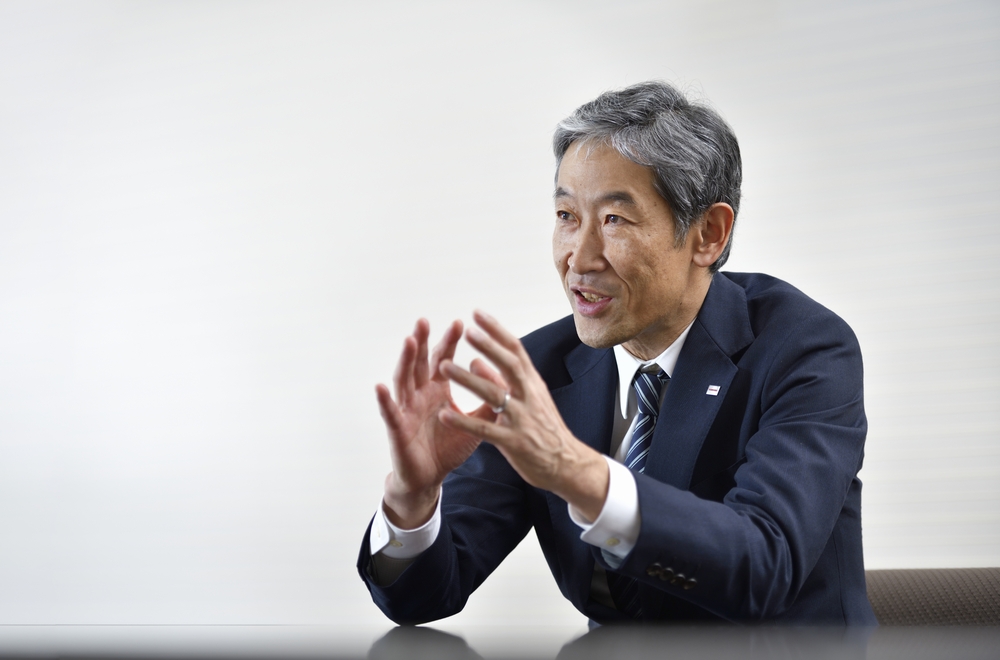
Dr. Shiro Saito, Toshiba’s Chief Technology Officer
To take a concrete example, we are collaborating with Cambridge University on quantum cryptographic communication. This is a technology that enables safe transmission of extremely confidential information—personal information and financial transaction information and the like—using communications technology that is theoretically impossible to hack.
The problems we face in putting this into practical use are traffic speed and the distance that the keys for decrypting encrypted information have to be communicated, but Toshiba is currently setting new world records for distance and speed. We are also conducting research and development in collaboration with Stanford University on hardware to reduce the power consumption of AI chips. Progress is good, and we have succeeded in reducing power consumption by 88%.
In terms of creating new business, we will release the seeds of businesses created in the R&D department into the world at an early stage. In addition to a learning mechanism based on receiving feedback, we have set up a CVC (Corporate Venture Capital) fund of 10 billion yen, and we want to use that to create new businesses that are not bound by the current business portfolio.
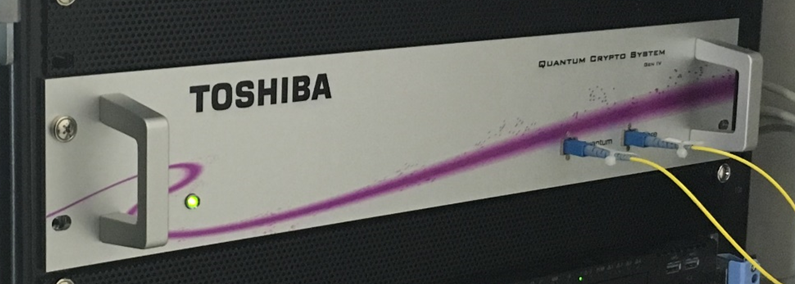
Quantum cryptographic device (transmitter)
-Toshiba continues to participate in precision medical treatment. Are there any particular technologies for which you have expectations?
Saito: Toshiba is researching a number of technologies across a series of medical procedures, covering prevention and screening, diagnosis and treatment. One is heavy particle beam cancer treatment equipment, which accelerates a heavy particle beam of carbon ions to about 70% of the speed of light and uses it to irradiate cancer cells. It involves two major technologies. First of these is the rotating gantry that actually irradiates the cancer cells, and here we have used a superconducting magnet in the structure to promote downsizing and reduce weight. The ability to rotate the gantry shortens the time it takes to treat a patient, without any need to tilt them. Closely related to this, we have a technology that uses image recognition technology to identify the position of the tumor and that moves the electron beam in time with the patient’s respiratory movements. With this we can precisely irradiate tumors with no need to embed markers inside the patient’s body. Both of these technologies greatly reduce burdens on the patient.

Rotary gantry and treatment room (Courtesy of QST/NIRS)
We also have other cancer-related technology, biodegradable liposomes. Simply explained, this is a capsule with a diameter of 100 to 200 nanometers that can be inserted into human cells, where it contributes to the discovery of cancer cells. The mechanism works like this: a capsule incorporating a test gene is inserted into a cell through its membrane, as it decomposes, it reacts to the presence of cancer cells by emitting light, which can be monitored to confirm the cancer. Its key feature is that it allows observation of live cancer cells, and we believe we can use it to monitor cancer cells and contribute to finding optimal treatments.
– As you promote research and development in various fields, what are your ideas on investments and future R&D activities?
Saito: We plan to invest 930 billion yen over the next five years, mainly in renewable energy technologies and the fields I mentioned earlier: SCiB™, power electronics, and robotics. In semiconductors our focus in on power devices and on HDD as a storage solution for data centers. In addition, in ICT for industry we will make sharply focused investments in such areas as development of SPINEX™, our IoT architecture, which we will use to transform our business; RECAIUS™, Toshiba’s communication AI; and “SATLYS™”, our analytics AI.
Having said that, we must also think about development in terms of improving profitability. Some products are not yet modularized or standardized. I want to improve the efficiency of development of products like these, and to shorten lead times by introducing IT, so that we can get a bird’s eye view of the overall process, from the initial stages of research and development on. From an organizational perspective, we are building a structure that includes our overseas research laboratories, so that we can consistently provide technologies, from basic research that generates business seeds through to research and development that pursues improvements in productivity and maintenance technologies, even after commercialization.
In product development for BtoC and semiconductors, the process until now has been to create and grow ideas at the laboratory and then finalize them for mass production. But for the BtoB business we first need to ask our customers what problems they face, and we must do this from the early stages of research and development, including production technologies.
– What do you expect from your researchers and engineers?
Saito: When I visit our domestic and overseas R&D and technology development bases and talk to the people there, I realize that many of them really want to propose their own ideas and create something new. We are trying to respond to this by establishing an open incubation system, which includes the 10-billion yen CVC I told you about. I think that, until now, we have been over concerned with the aspects of too high a level of completion and quality. Obviously, we are not going to release unfinished, low quality products into the market, but if we recognize a certain degree of completion that is acceptable to us, we can more speedily bring things to market, and use the feedback we get to make improvements. Also, depending on what we are working on, we can incorporate wisdom and technology from outside. I think it’s OK for that way of doing things to also exist.
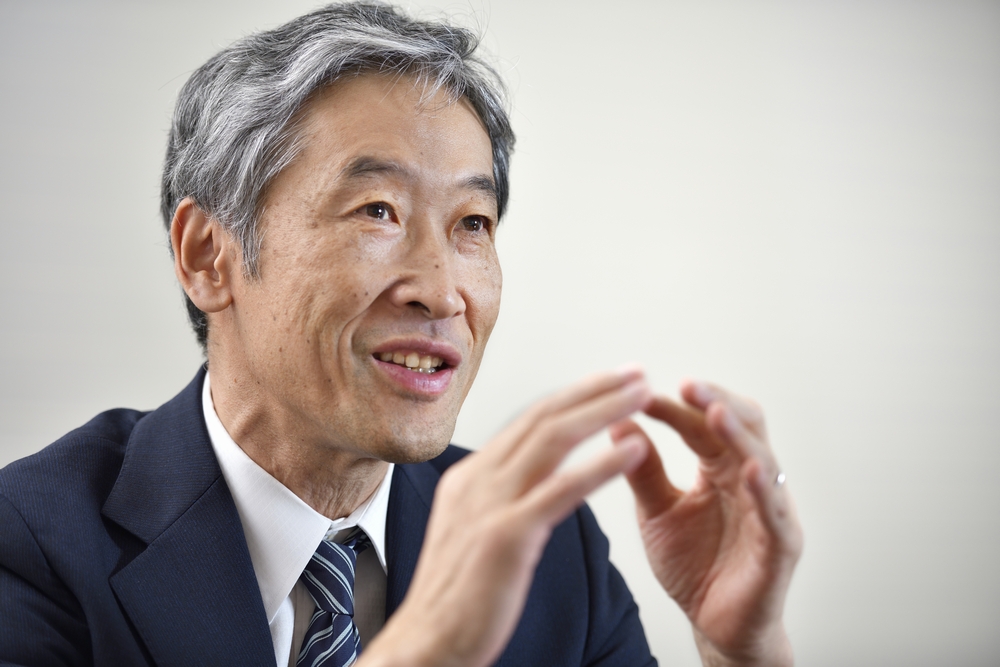
Today technology is fairly subdivided. However, using individual technologies by themselves makes it difficult to make things. Given that invention is all about producing one from zero, we will make new proposals and solutions by combining technologies. That’s exactly what I think innovation is. With that objective, it is important that researchers and technicians look not only at their own field, but also raise their antennas high.
The basis of our research and development is how to solve social problems related to megatrends. So what we have been doing up to now is essentially the same approach as envisaged by the SDGs. Moving forward, I want to see our researchers and developers working with an awareness that technology R&D is a means to solve social problems and achieve the goals of the SDGs. I would like them to always be aware of the social issues linked to the technology they are working on.
I would really love them to embrace the spirit that they are the people who turn on the promise of a new day, and that they are the people who open up the future and bring it to us. Toshiba is a company that is waiting, hoping for new proposals that are not necessarily part of our current business portfolio. After all, there is nothing to be afraid of!
![]()
Related Links
*This section contains links to websites operated by companies and organizations other than Toshiba Corporation.
https://www.toshiba.eu/pages/eu/Cambridge-Research-Laboratory/toshiba-redefines-the-limit-of-intercity-secure-communications





